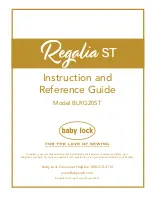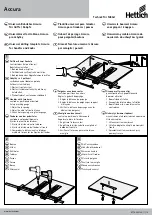
8
Copyright © 2013 Alary Design / PhotoShip One LLC -
www.PhotoShipOne.com
The yaw axis is balanced next. Yaw axis may not be able to bet set to a perfect balance and in most
cases that will not present a major problem. Just balance the yaw axis as closely as you are able.
The yaw axis is balanced by orienting the A10 on it’s side. When properly balanced the yaw axis will
remain in any orientation you place it in without falling over to one side or another. Figure 16.
Figure 16. Yaw axis balancing
Adjusting the yaw axis balance is accomplished by moving the yaw motor assembly fore/aft on the
horizontal tube. There is a limited amount of movement that can be done without the tube rubbing
against the motor. Cameras lighter than 2.0lb (0.9kg) may not be able to be perfectly balanced in the
yaw axis due to the physical layout/geometry of the A10. As previously mentioned, it is only important
to get the balance as close as possible.
Figure 17. Yaw motor adjustment
Focal Length Changes
Most zoom lenses will extend when the focal length is adjusted higher. This will cause an imbalance in
the tilt axis. Phoenix A10 is tolerant of moderate changes in focal length but it is best to adjust for tilt
balance at a midpoint of the focal length you know you will be using. For instance, if you know you will
be shooting between 20-75mm it would be best to complete the tilt axis balancing with the lens set to
about 48mm.
We have found Phoenix A10 to work quite well at focal lengths as long as 200mm provided the total
camera/lens weight is kept under about 4.75lb.

































